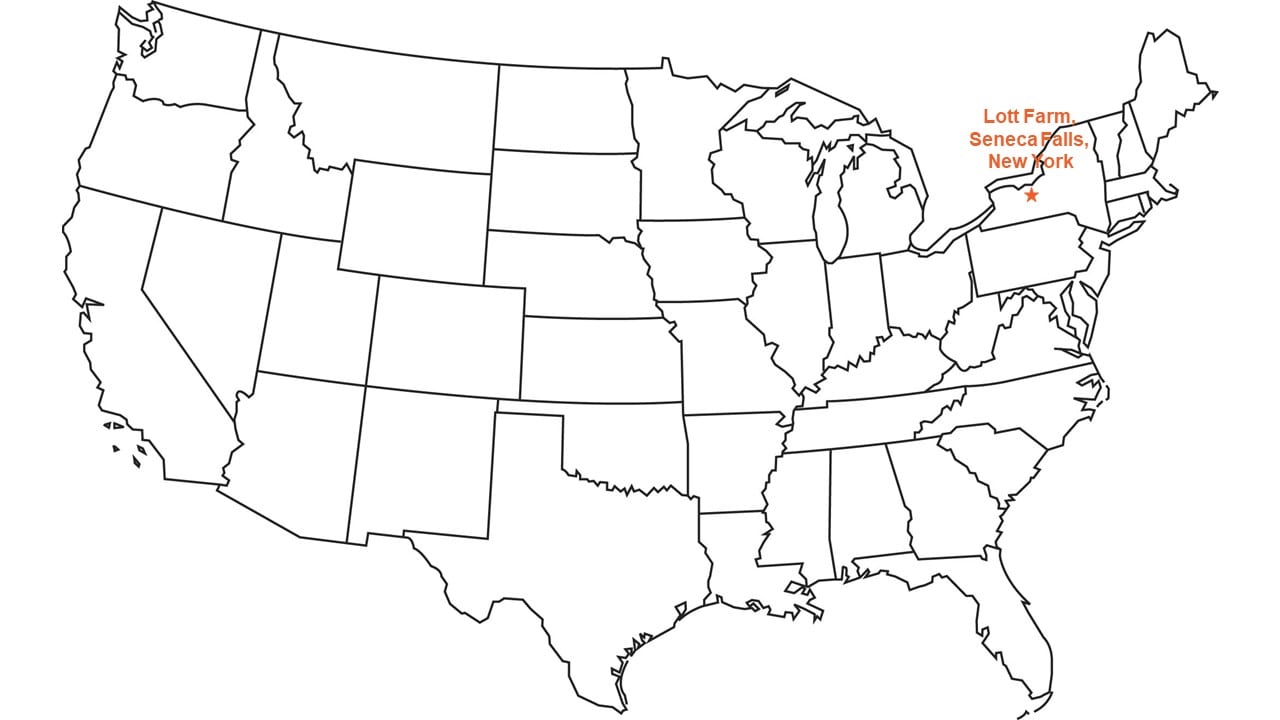In mid-April, we received the rain we had been waiting for to provide some soil moisture. It came with cool temperatures. Our long-term forecast shows a chance of more precipitation through the end of the month. As field conditions dry out, we are just starting to prepare our fields for planting.
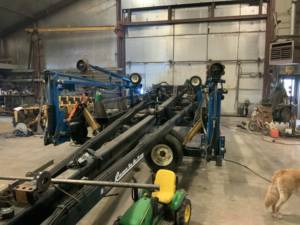 We have been able to test the piece of strip-till equipment we are building. The first test showed that it did not have enough weight to cut into the ground. My sons, Rodman and Ben, added concrete blocks for additional weight, as well as the system that will place fertilizer precisely where we want it. We will keep testing it, and when it is ready to go and the fields are dry enough – hopefully within the next week, – Ben will start strip-tilling the fields that will be planted to corn.
We have been able to test the piece of strip-till equipment we are building. The first test showed that it did not have enough weight to cut into the ground. My sons, Rodman and Ben, added concrete blocks for additional weight, as well as the system that will place fertilizer precisely where we want it. We will keep testing it, and when it is ready to go and the fields are dry enough – hopefully within the next week, – Ben will start strip-tilling the fields that will be planted to corn.
At the same time, Rodman will start applying burndown herbicides. This herbicide application will be customized based on weather conditions and the plan for the field. If the field will be planted to soybeans, all we need is a burndown herbicide to control winter weeds that currently are using the moisture in the fields.
For fields that will be planted to corn, we have several decisions to make. Some of these fields have a wheat cover crop. That cover crop will grow based on weather and temperatures. If warmer temperatures allow the cover crop to grow taller than 20 to 25 centimeters, or 8 to 10 inches, we will terminate it with a burndown herbicide to prevent slugs from becoming a problem. If the cover crop gets too big, slugs will thrive, and later, when the cover crop has been terminated, they will chew off the emerging corn plants. However, if we have cooler temperatures and the cover crop is shorter than that, we will strip till and plant corn into the green cover crop. Then, we will terminate the cover crop with a burndown herbicide just before the corn emerges.
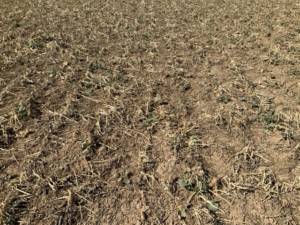 In all the fields that will be corn, whether they have a cover crop or not, we will decide when to apply the residual pre-emergence herbicide that will help control weeds that emerge with the corn seedlings. Depending on weather conditions and timing between burndown and planting, we may apply pre-emergence herbicide with the burndown herbicide, or we may decide to separately apply each type of herbicide.
In all the fields that will be corn, whether they have a cover crop or not, we will decide when to apply the residual pre-emergence herbicide that will help control weeds that emerge with the corn seedlings. Depending on weather conditions and timing between burndown and planting, we may apply pre-emergence herbicide with the burndown herbicide, or we may decide to separately apply each type of herbicide.
While they do field preparation, I will continue hauling corn to the local feed mill, loading soybeans as our processor sends trucks to pick it up, and haul fertilizer to Ben as he strip-tills corn fields.
Once the fields are prepared, hopefully by the second week of May, we will start planting. Our corn seed has been delivered to the farm, and our soybean seed will be delivered closer to planting. It will be treated with an inoculant to protect it from soil pests and help it emerge well, but that treatment needs to be put on shortly before the seed is planted.
We have a planter dedicated to soybeans, and another planter dedicated to corn. Ben focuses on soybeans, Rodman plants corn, and my wife, Shirley, and I haul seed tenders and fertilizer to the fields to keep them running. On good days, we can plant more than 40 hectares, or about 100 acres, of soybeans and corn per day. We need 12 to 15 days like that to get our crops planted.
In the meantime, our winter wheat is growing well and looking good, nearly 20 cm, or 8 inches, tall. We will treat it with an herbicide soon to control winter annuals.
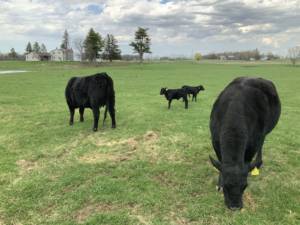
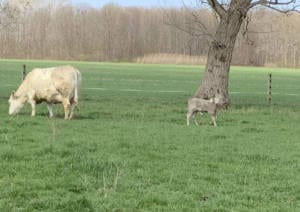 I am enjoying calving season. Several calves have come already, and we are waiting on a few more. I bring the cows to a barn to have their calves, but as soon as possible, we allow them outside so the calves learn to stay within the fences. Within a few days, I take them out to the pasture with their mothers to grow.
I am enjoying calving season. Several calves have come already, and we are waiting on a few more. I bring the cows to a barn to have their calves, but as soon as possible, we allow them outside so the calves learn to stay within the fences. Within a few days, I take them out to the pasture with their mothers to grow.
Clearly, there is always something to do on the farm, and we are looking forward to a busy spring and trying strip-tillage.
